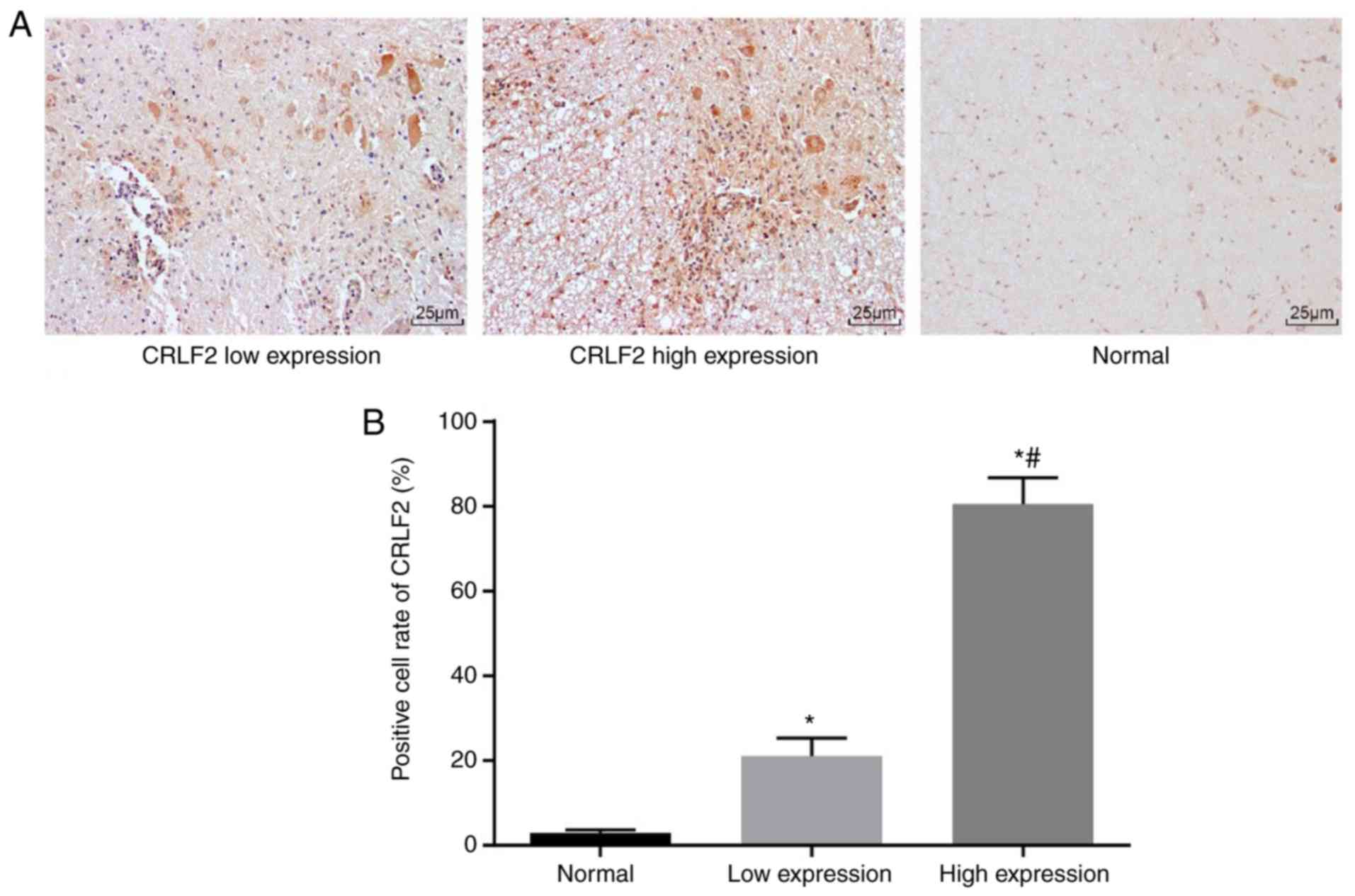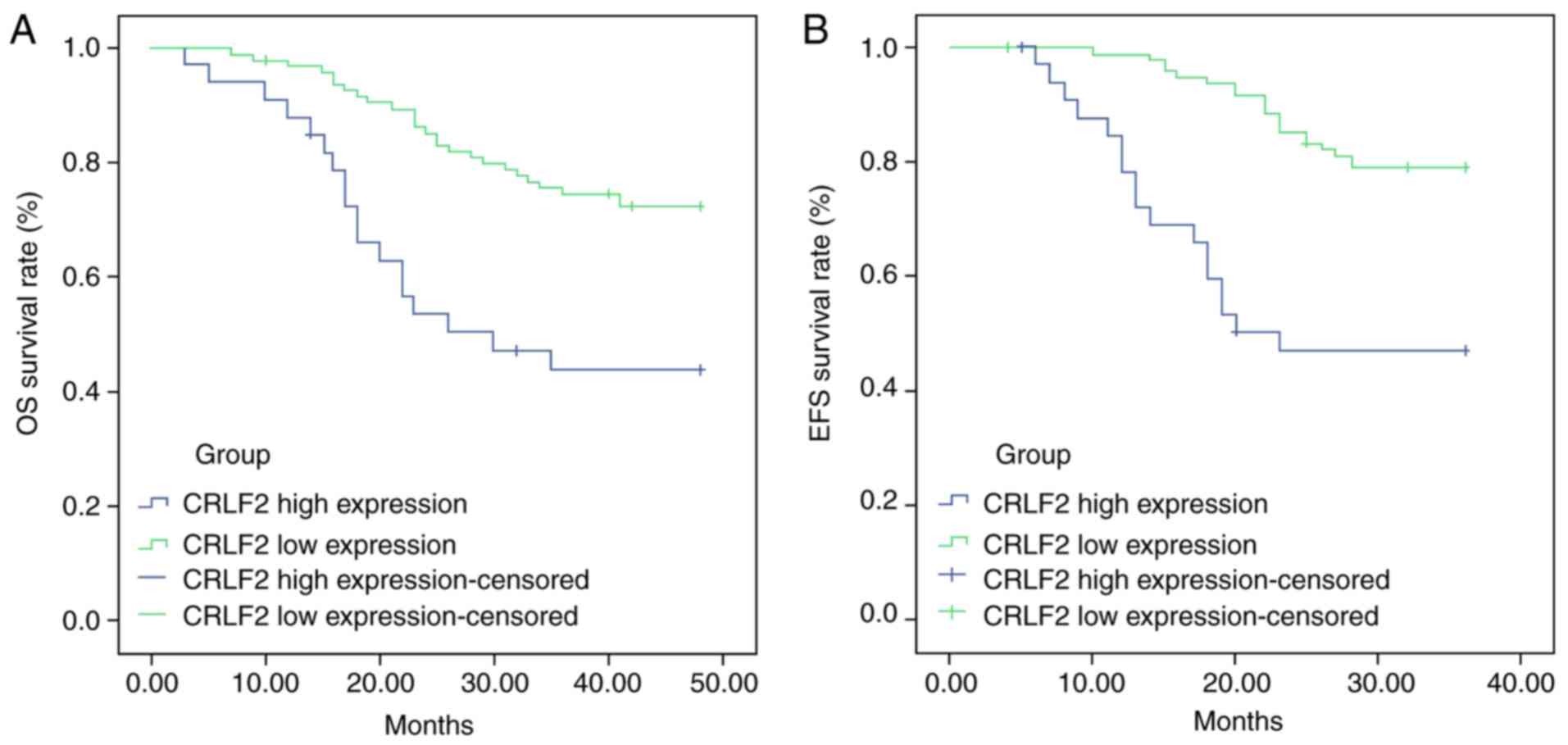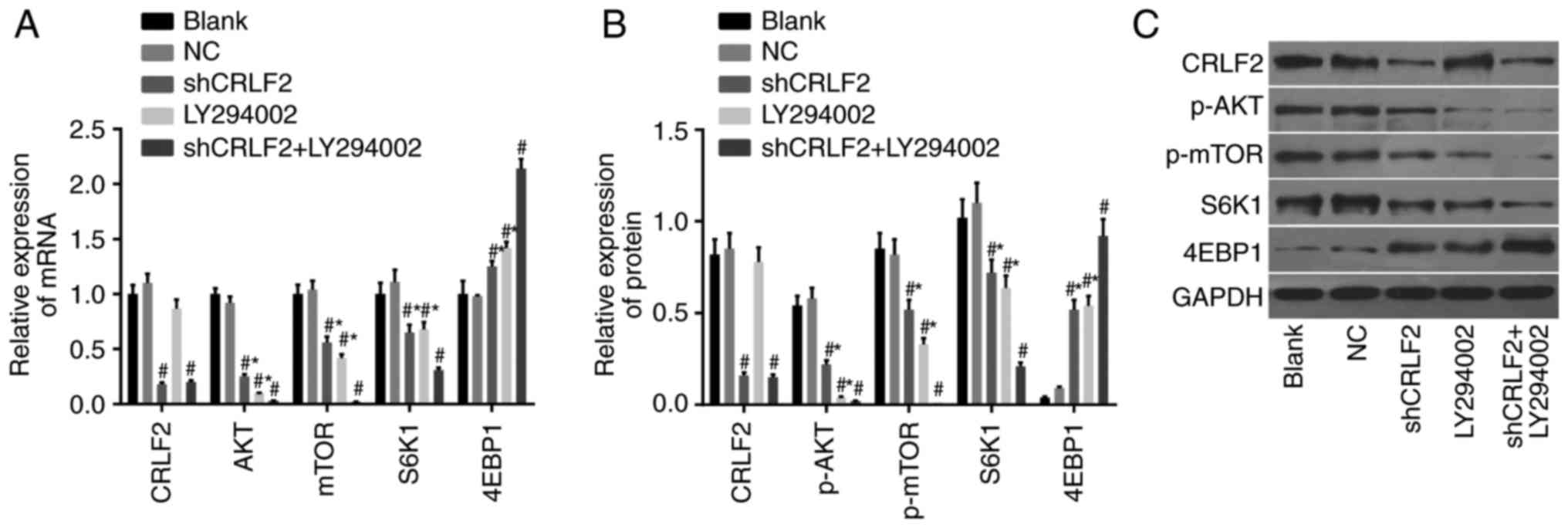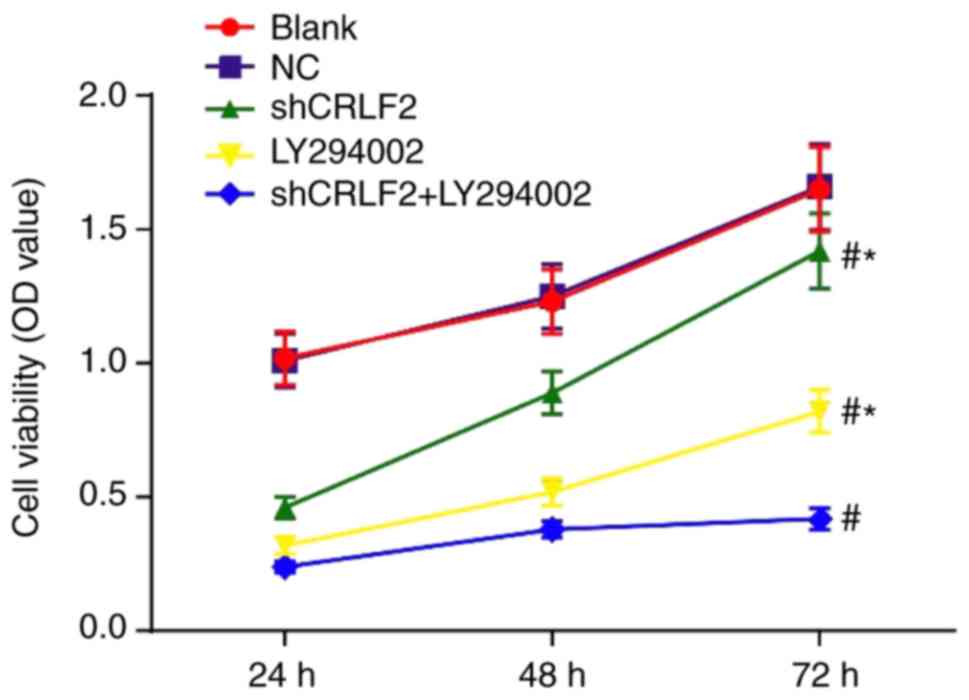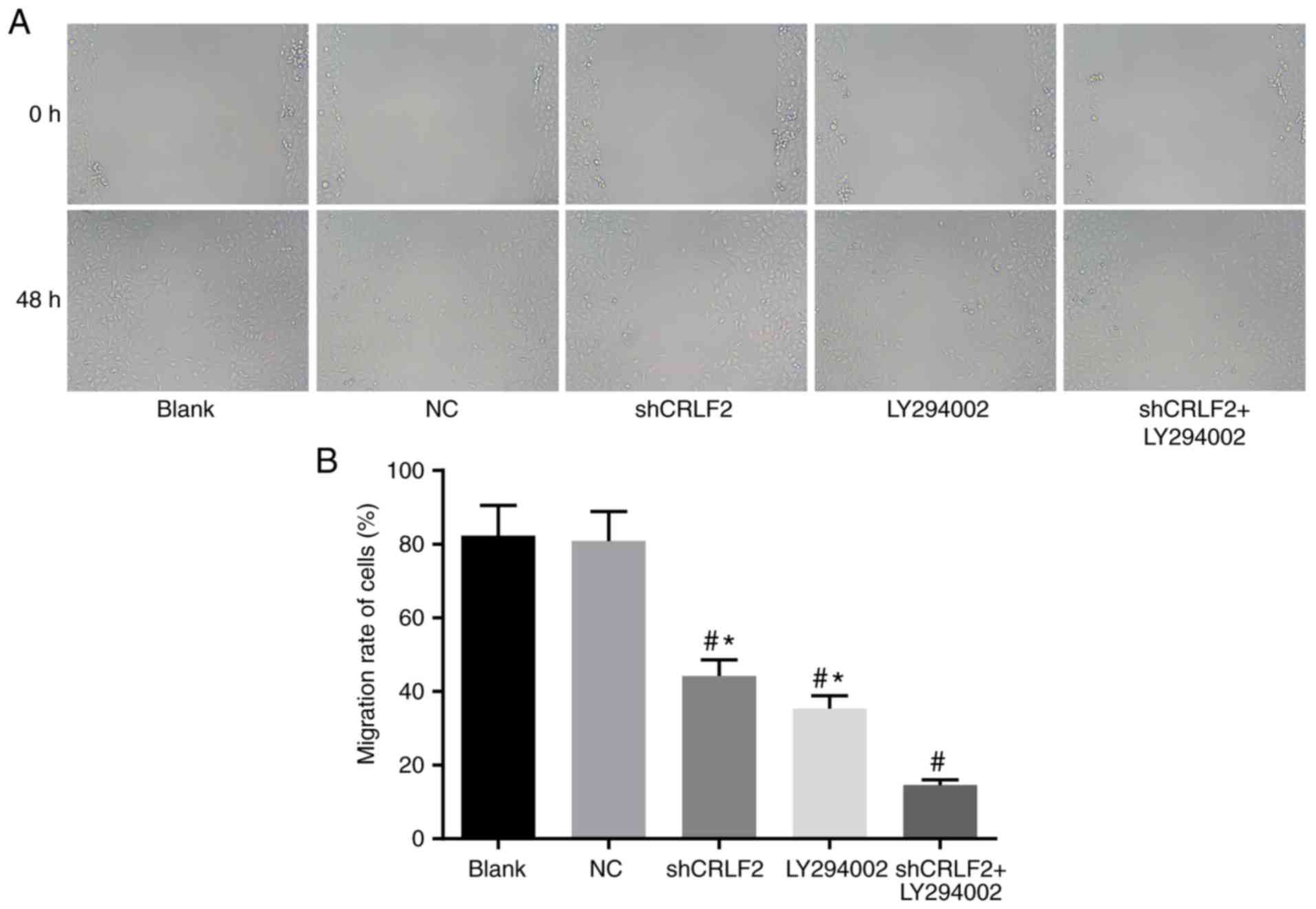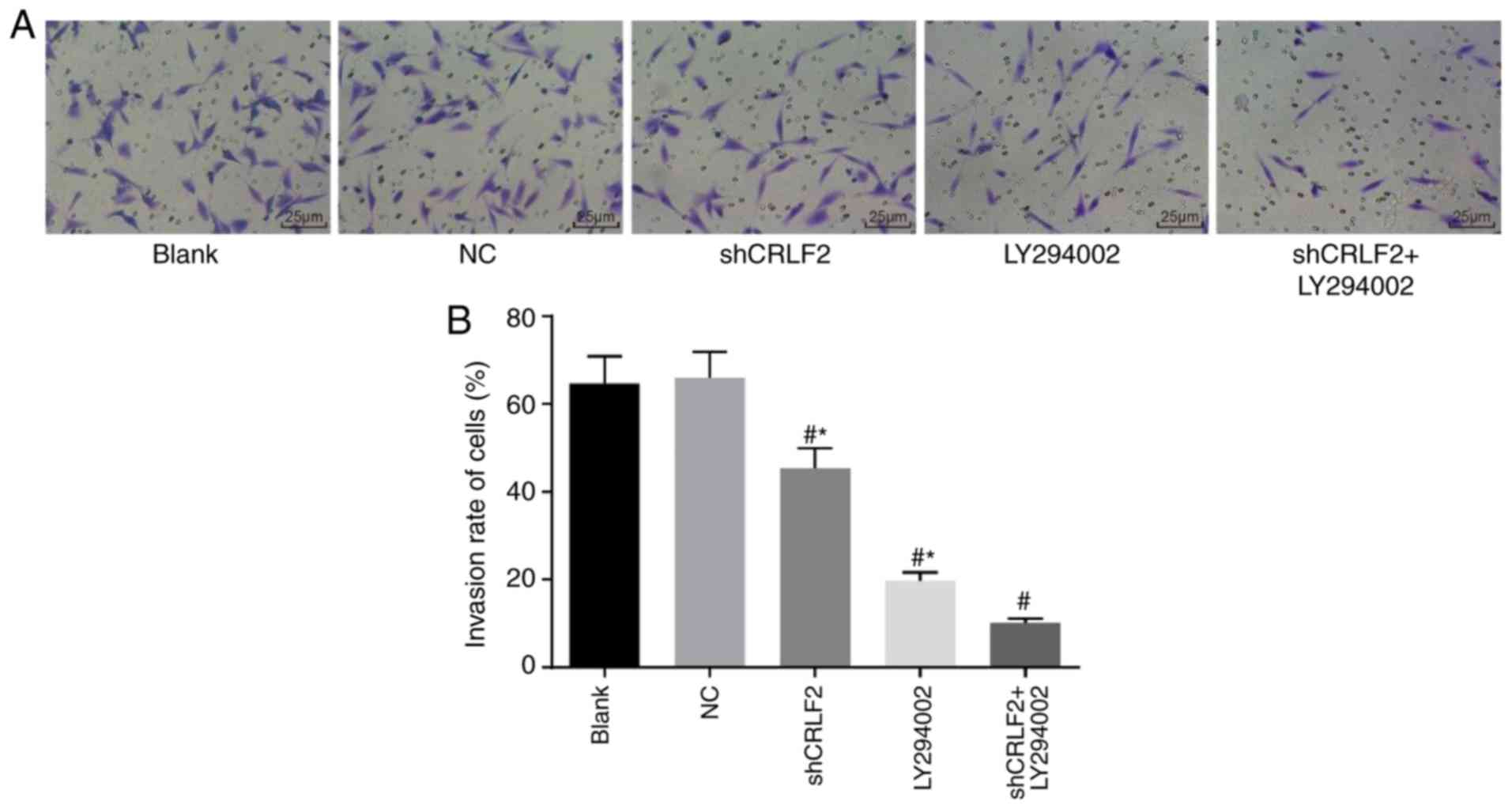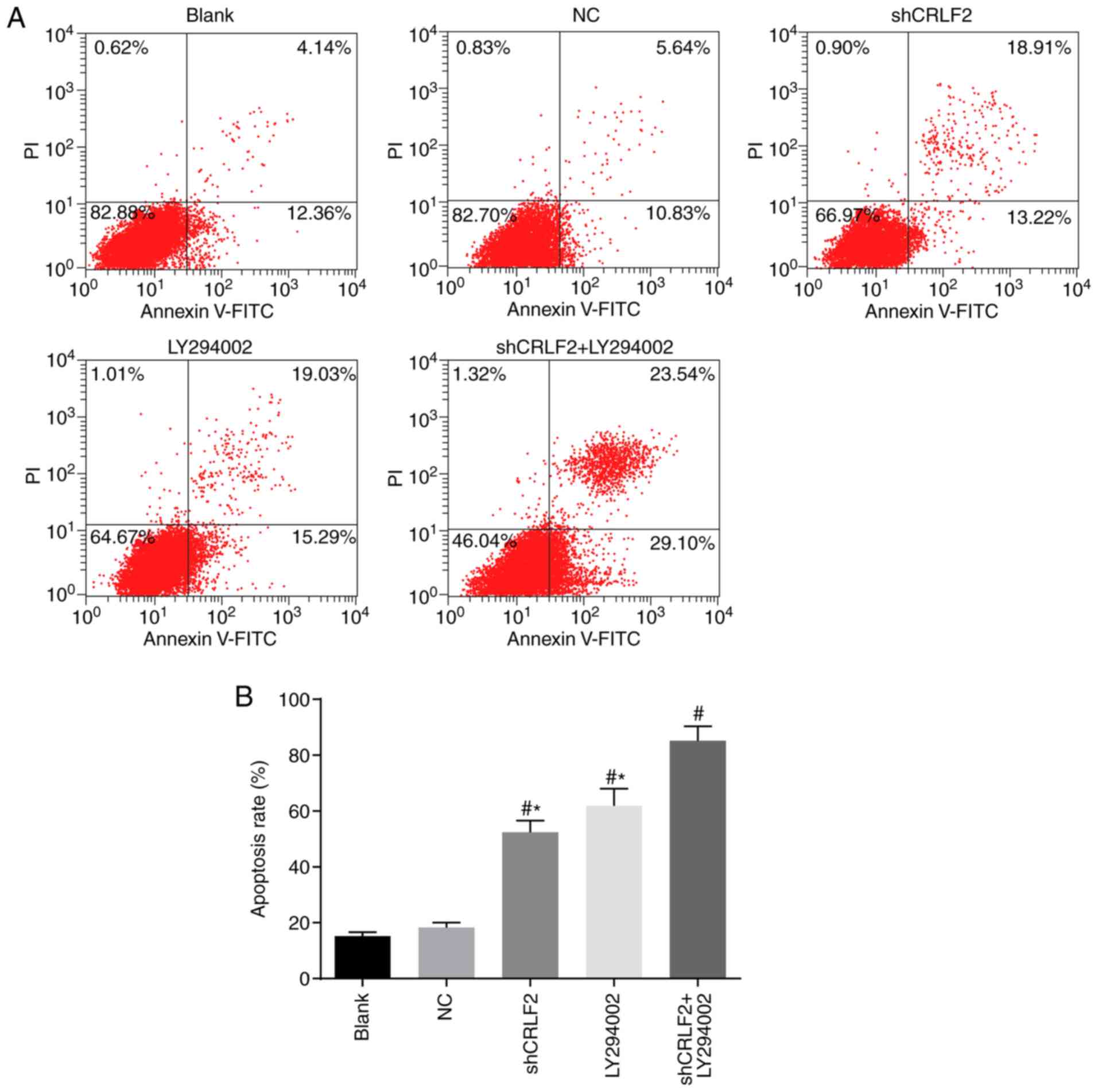|
1
|
Buitenkamp TD, Izraeli S, Zimmermann M,
Forestier E, Heerema NA, van den Heuvel-Eibrink MM, Pieters R,
Korbijn CM, Silverman LB, Schmiegelow K, et al: Acute lymphoblastic
leukemia in children with down syndrome: A retrospective analysis
from the Ponte di Legno study group. Blood. 123:70–77. 2014.
View Article : Google Scholar : PubMed/NCBI
|
|
2
|
Tasian SK, Doral MY, Borowitz MJ, Wood BL,
Chen IM, Harvey RC, Gastier-Foster JM, Willman CL, Hunger SP,
Mullighan CG, et al: Aberrant STAT5 and PI3K/mTOR pathway signaling
occurs in human CRLF2-rearranged B-precursor acute lymphoblastic
leukemia. Blood. 120:833–842. 2012. View Article : Google Scholar : PubMed/NCBI
|
|
3
|
Maude S, Tasian S, Vincent T, Hall J,
Roberts K, Collins R, Mullighan C, Hunger S, Willman C, Loh M, et
al: Targeting JAK2 and mTOR in xenograft models of
CRLF2-overexpressing Acute Lymphoblastic Leukemia (ALL). Pediat
Blood Cancer. 58:1014. 2012.
|
|
4
|
Tasian SK, Maude SL, Hall J, Vincent T,
Mullighan CG, Willman CL, Hunger S, Loh ML, Teachey DT and Grupp
SA: In vivo monitoring of JAK/STAT and PI3K/mTOR signal
transduction inhibition in pediatric CRLF2-rearranged acute
lymphoblastic leukemia (ALL). J Clin Oncol. 9506:2012.
|
|
5
|
Krawczyk J, Haslam K, Lynam P, Kelly J,
Storey L, O'Marcaigh A, Langabeer SE and Smith OP: No prognostic
impact of P2RY8-CRLF2 fusion in intermediate cytogenetic risk
childhood B-cell acute lymphoblastic leukaemia. Br J Haematol.
160:555–556. 2013. View Article : Google Scholar : PubMed/NCBI
|
|
6
|
Francis OL: TSLP-induced mechanisms and
potential therapies for CRLF2 B-cell acute lymphoblastic leukemia.
Dissertations Theses-Gradworks. Loma Linda University Electronic
Theses, Dissertations & Projects. 282:2015.
|
|
7
|
Maude SL, Tasian SK, Vincent T, Hall JW,
Sheen C, Roberts KG, Seif AE, Barrett DM, Chen IM, Collins JR, et
al: Targeting JAK1/2 and mTOR in murine xenograft models of Ph-like
acute lymphoblastic leukemia. Blood. 120:3510–3518. 2012.
View Article : Google Scholar : PubMed/NCBI
|
|
8
|
Chiaretti S, Brugnoletti F, Messina M,
Paoloni F, Fedullo AL, Piciocchi A, Elia L, Vitale A, Mauro E,
Ferrara F, et al: CRLF2 overexpression identifies an unfavourable
subgroup of adult B-cell precursor acute lymphoblastic leukemia
lacking recurrent genetic abnormalities. Leuk Res. 41:36–42. 2016.
View Article : Google Scholar : PubMed/NCBI
|
|
9
|
Konoplev S, Lu X, Konopleva M, Jain N,
Ouyang J, Goswami M, Roberts KG, Valentine M, Mullighan CG,
Bueso-Ramos C1, et al: CRLF2-positive B-cell acute lymphoblastic
leukemia in adult patients: A single-institution experience. Am J
Clin Pathol. 147:357–363. 2017. View Article : Google Scholar : PubMed/NCBI
|
|
10
|
Dou H, Chen X, Huang Y, Su Y, Lu L, Yu J,
Yin Y and Bao L: Prognostic significance of P2RY8-CRLF2 and CRLF2
overexpression may vary across risk subgroups of childhood B-cell
acute lymphoblastic leukemia. Genes Chromosomes Cancer. 56:135–146.
2017. View Article : Google Scholar : PubMed/NCBI
|
|
11
|
Neri LM, Cani A, Martelli AM, Simioni C,
Junghanss C, Tabellini G, Ricci F, Tazzari PL, Pagliaro P, McCubrey
JA, et al: Targeting the PI3K/Akt/mTOR signaling pathway in
B-precursor acute lymphoblastic leukemia and its therapeutic
potential. Leukemia. 28:739–748. 2014. View Article : Google Scholar : PubMed/NCBI
|
|
12
|
Tasian SK, Teachey DT, Li Y, Shen F,
Harvey RC, Chen IM, Ryan T, Vincent TL, Willman CL, Perl AE, et al:
Potent efficacy of combined PI3K/mTOR and JAK or ABL inhibition in
murine xenograft models of Ph-like acute lymphoblastic leukemia.
Blood. 129:177–187. 2017. View Article : Google Scholar : PubMed/NCBI
|
|
13
|
Möricke A, Zimmermann M, Valsecchi MG,
Stanulla M, Biondi A, Mann G, Locatelli F, Cazzaniga G, Niggli F,
Aricò M, et al: Dexamethasone vs prednisone in induction treatment
of pediatric ALL: Results of the randomized trial AIEOP-BFM ALL
2000. Blood. 127:2101–2112. 2016. View Article : Google Scholar : PubMed/NCBI
|
|
14
|
Zhang B, Suer S, Livak F, Adediran S,
Vemula A, Khan MA, Ning Y and Hussain A: Telomere and microtubule
targeting in treatment-sensitive and treatment-resistant human
prostate cancer cells. Mol Pharmacol. 82:310–321. 2012. View Article : Google Scholar : PubMed/NCBI
|
|
15
|
Jain N, Lu X, Daver N, Thakral B, Wang SA,
Konoplev S, Patel K, Kanagal-Shamanna R, Valentine M, Tang G, et
al: Co-occurrence of CRLF2-rearranged and Ph+ acute lymphoblastic
leukemia: A report of four patients. Haematologica. 102:e514–e517.
2017. View Article : Google Scholar : PubMed/NCBI
|
|
16
|
Sadras T, Heatley SL, Kok CH, Dang P,
Galbraith KM, McClure BJ, Muskovic W, Venn NC, Moore S, Osborn M,
et al: Differential expression of MUC4, GPR110 and IL2RA defines
two groups of CRLF2-rearranged acute lymphoblastic leukemia
patients with distinct secondary lesions. Cancer Lett. 408:92–101.
2017. View Article : Google Scholar : PubMed/NCBI
|
|
17
|
Francis OL, Shiraz P, Milford TA, Baez I,
Coats JS, Mayagoitia K, Ginelli E, Salcedoconcepcion KR, Martinez
S, Zhang X, et al: Abstract 3295: A novel patient-derived xenograft
model for evaluating the role of TSLP in CRLF2 B-ALL. Cancer Res.
75:3295. 2015. View Article : Google Scholar
|
|
18
|
Herold T, Schneider S, Metzeler KH,
Neumann M, Hartmann L, Roberts KG, Konstandin NP, Greif PA, Bräundl
K, Ksienzyk B, et al: Adults with Philadelphia chromosome-like
acute lymphoblastic leukemia frequently have IGH-CRLF2 and JAK2
mutations, persistence of minimal residual disease and poor
prognosis. Haematologica. 102:130–138. 2017. View Article : Google Scholar : PubMed/NCBI
|
|
19
|
Stoian C, Mambo NG, Mccarthy P, Vidales V,
Coats JS, Baez I, Dovat S, Gohar SF, Desai D, Kamal M and Payne KJ:
Abstract 5829: Targeting TSLP-induce upregulation of Mcl-1 for the
treatment of Ph-like ALL with CRLF2 alterations. Cancer Res.
77:5829. 2017. View Article : Google Scholar
|
|
20
|
Shi C, Han L, Tabe Y, Mu H, Wu SC, Zhou J,
Zeng Z, Fruman DA, Tasian SK, Weinstock DM and Konopleva M: Dual
targeting of JAK2 signaling with a type II JAK2 inhibitor and of
mTOR with a TOR kinase inhibitor induces apoptosis in
CRLF2-rearranged Ph-like acute lymphoblastic leukemia. Blood.
124:37062014.
|
|
21
|
Zhang Q, Shi C, Han L, Jain N, Roberts KG,
Ma H, Cai T, Cavazos A, Tabe Y, Jacamo RO, et al: Inhibition of
mTORC1/C2 signaling improves anti-leukemia efficacy of JAK/STAT
blockade in CRLF2 rearranged and/or JAK driven Philadelphia
chromosome-like acute B-cell lymphoblastic leukemia. Oncotarget.
9:8027–8041. 2018.PubMed/NCBI
|
|
22
|
Francis OL, Milford TA, Martinez SR, Baez
I, Coats JS, Mayagoitia K, Concepcion KR, Ginelli E, Beldiman C,
Benitez A, et al: A novel xenograft model to study the role of
TSLP-induced CRLF2 signals in normal and malignant human B
lymphopoiesis. Haematologica. 101:417–426. 2016. View Article : Google Scholar : PubMed/NCBI
|
|
23
|
Lane AA, Bodegom DV, Chapuy B, Alexe G,
Sullivan TJ, Tivey T, Day T, Crispino J, Fox E, Stegmaier K and
Weinstock D: Trisomy of the down syndrome critical region
suppresses precursor B-cell differentiation and promotes B-cell
transformation associated with altered expression of polycomb
repressor complex 2 targets. Blood. 120:1152012.
|
|
24
|
Raghunathan R, Mahesula S, Kancharla K,
Janardhanan P, Jadhav YL, Nadeau R, Villa GP, Cook RL, Witt CM,
Gelfond JA, et al: Anti-CRLF2 antibody-armored biodegradable
nanoparticles for childhood B-ALL. Part Part Syst Charact.
30:355–364. 2013. View Article : Google Scholar : PubMed/NCBI
|















